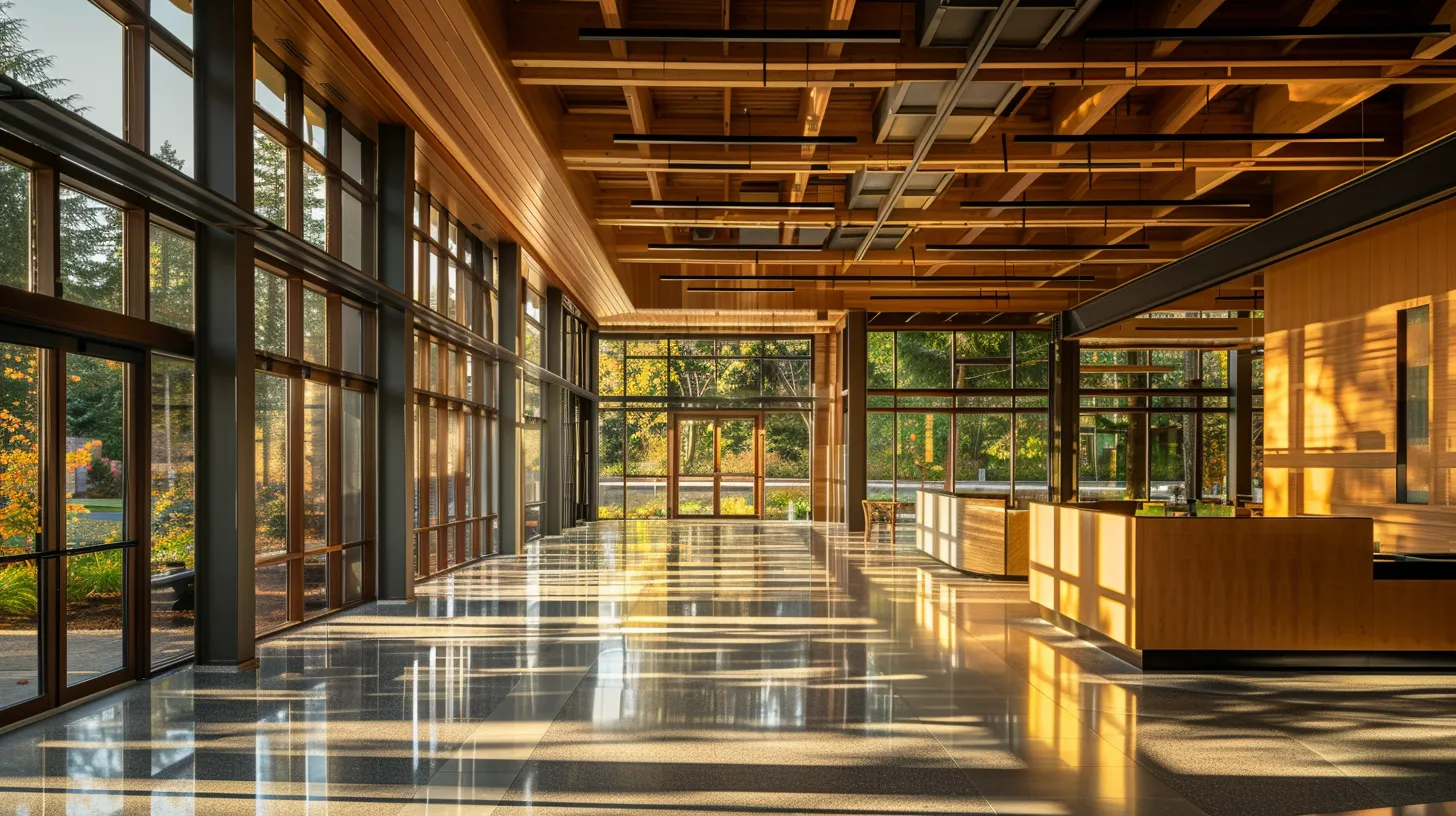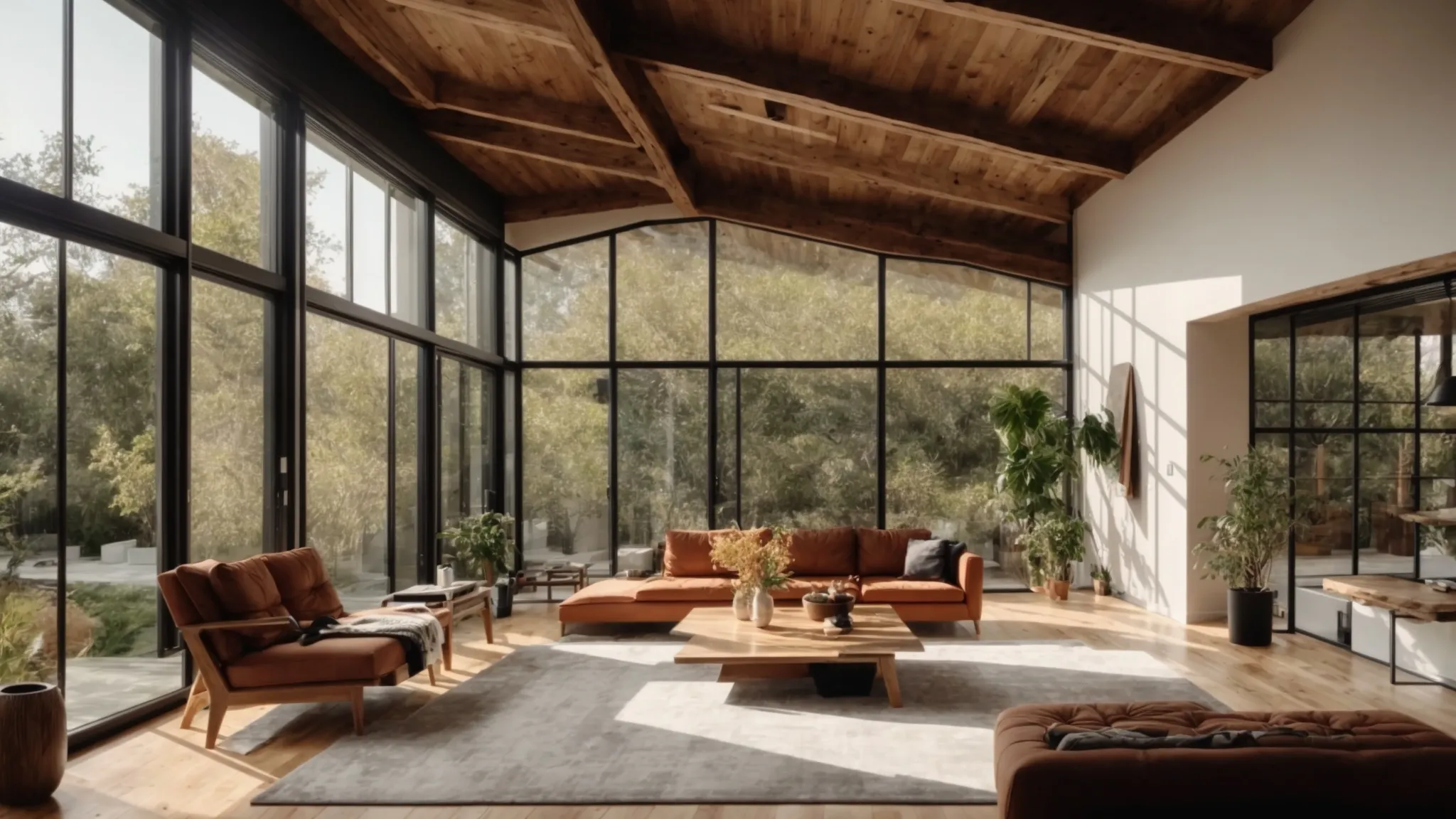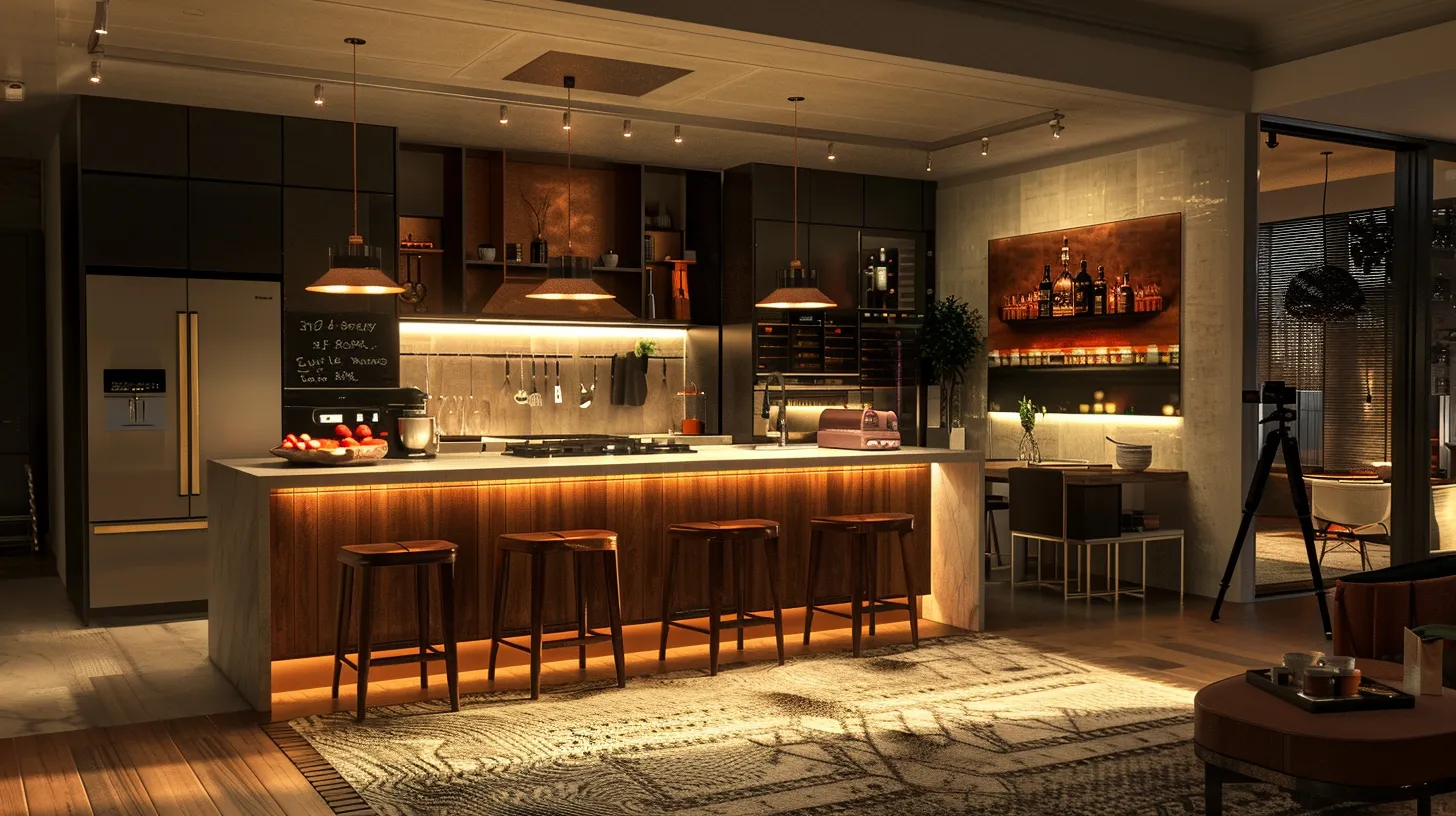What Are the Best Materials for Home Renovation?

What Are the Best Materials for Home Renovation?
When embarking on a home renovation, choosing the right materials can significantly impact the project's outcomes. Understanding the concepts of longevity and prefabrication, and their influence on global warming potential, is essential. This article explores various materials, highlighting their durability, maintenance needs, and aesthetic appeal, as well as offering eco-friendly options to minimize resource use. Readers will gain insights to make informed decisions, addressing the common challenge of balancing quality with environmental concerns in home renovations.
Key Takeaways
- Choosing sustainable materials enhances energy efficiency and property value in home renovations
- Evaluating both initial and long-term costs is essential for informed material selection
- Collaborating with contractors ensures appropriate material choices that balance aesthetics and functionality
- Understanding the impact of color and texture can improve visual appeal throughout the renovation
- Innovative materials trend toward sustainability and minimalism, reflecting an awareness of environmental impact
Understanding Home Renovation Materials

Effective materials are fundamental in home renovation , impacting both aesthetics and functionality. Selecting the right building materials, such as cabinetry and sand for landscaping projects, ensures durability and efficiency. This section will cover the importance of material choice, along with a look at common renovation projects that can benefit from recycling and thoughtful sourcing of materials.
Defining Effective Materials
Effective materials play a crucial role in home renovation, influencing both the structural integrity and overall aesthetics of a space. For instance, the choice of kitchen cabinets affects not only the look but also the storage capacity and longevity of the installation. Additionally, using sustainable options in roofing or materials for a bathroom remodel can significantly contribute to green building practices, enhancing energy efficiency while complementing modern architecture.
- Importance of selecting the right materials
- Examples: kitchen cabinet choices and roofing materials
- Benefits of sustainability in home renovations
- Impact on overall architecture and design
- Considerations for bathroom remodel efficiency
Importance of Material Selection
Material selection is critical in achieving both aesthetic appeal and practical functionality in home renovations. The choice of sustainable building materials not only supports environmental efforts but also enhances a property's value. For example, incorporating thermal mass elements like granite in flooring can improve energy efficiency, providing effective temperature regulation throughout the year.
| Material Type | Benefits | Examples |
|---|---|---|
| Sustainable Building Materials | Environmentally friendly, energy-efficient | Bamboo, recycled wood |
| Granite | Durability, thermal mass | Countertops, flooring |
| Insulation Materials | Energy efficiency, comfort | Spray foam, cellulose |
| Low-VOC Paints | Improved air quality | Water-based, natural paints |
Overview of Common Renovation Projects
Common renovation projects encompass a wide range of improvements, each requiring specific materials that align with the intended functionality and aesthetic goals. For instance, a bathroom overhaul often involves the use of moisture-resistant tile for the shower area, while adding mass through thicker walls can enhance durability and energy efficiency. Engaging a general contractor can greatly assist in selecting the right mixture of materials that balance style and practicality, ensuring that each aspect of the renovation is executed efficiently.
- Bathroom renovations with moisture-resistant tile
- Utilizing mass for improved energy efficiency
- Collaborating with a general contractor for material selection
- Importance of a cohesive mixture for aesthetics and function
Choosing the right materials can shape not just the look, but also the feel of a home. Now, it’s time to compare these materials and see which ones stand out for your next renovation.
Comparing Different Materials for Home Renovation

Evaluating various materials is fundamental in home renovation projects. This section examines the strengths and weaknesses of wood versus metal for structural elements, as well as the pros and cons of concrete and brick. The analysis of siding options involves assessing vinyl, wood, and composite materials, while a comparison of ceramic and porcelain tiles will highlight their suitability for bathroom applications. Each topic provides practical insights into material choice and energy conservation, addressing common uncertainties homeowners face.
Evaluating Wood vs. Metal for Structural Elements
When evaluating wood versus metal for structural elements, each material presents distinct advantages and challenges in construction. Steel, known for its high strength-to-weight ratio, offers durability and fire resistance, making it a common choice in modern building projects. In contrast, wood, while aesthetically pleasing and possessing natural insulation properties, may be susceptible to moisture issues and pest damage; however, composite materials can bridge some of these gaps, providing enhanced durability without sacrificing the warmth of wood. Ultimately, the selection between these materials often depends on specific project requirements, including budget and desired longevity.
Pros and Cons of Concrete and Brick
When considering materials for home renovation, both cement and brick present unique advantages and challenges. Concrete, known for its strength and durability, offers excellent efficiency in construction, providing resistance to mold and mildew when properly sealed; however, it can be vulnerable to cracking under extreme temperature changes. On the other hand, brick, made from clay and fired at high temperatures, delivers timeless aesthetics and natural insulation but may require maintenance to prevent water absorption and potential mildew growth if not adequately protected. This balance of efficiency and longevity often guides homeowners in their material choice.
- Concrete's benefits include strength and efficiency.
- Brick offers aesthetic appeal and natural insulation.
- Both materials have maintenance considerations, particularly regarding water resistance.
Assessing Vinyl, Wood, and Composite for Siding
When assessing vinyl, wood, and composite materials for siding, homeowners must consider durability and aesthetics to make informed renovation choices. Vinyl is often favored for its low maintenance and versatility, seamlessly mimicking the look of wood without the inherent drawbacks of natural materials. In contrast, hardwood provides genuine beauty and can enhance curb appeal, but it may require more upkeep to combat wear from the natural environment. Composite siding offers a compromise, delivering the look of wood with greater resilience and less maintenance, making it an ideal option for those seeking long-lasting performance while preserving the elegance of wood flooring or other architectural elements. Each choice presents unique benefits, aligning with varied remodeling needs and desires for a functional yet stylish exterior.
Analyzing Ceramic vs. Porcelain Tiles
Ceramic and porcelain tiles serve as popular options for home renovation, particularly in areas subject to moisture, such as bathrooms and kitchens. While both materials offer impressive durability and aesthetic appeal, porcelain stands out due to its superior moisture regulation, making it less porous and more resistant to water absorption. Additionally, choosing tile products with a lower ecological footprint can contribute to sustainable renovation practices, allowing homeowners to achieve their design goals while minimizing environmental impact.
The choice of materials shapes every renovation. As homeowners consider their options, a growing interest in eco-friendly solutions emerges, offering both charm and sustainability.
Eco-Friendly Options for Home Renovation

Sustainable materials offer numerous advantages for home renovations, including minimizing the carbon footprint and contributing to healthier living environments. Recycled and upcycled materials not only reduce waste but also provide unique aesthetic options, while natural insulation solutions enhance energy efficiency, supporting climate-friendly initiatives. Each of these topics serves to highlight practical ways homeowners can experiment with environmentally friendly choices that align with modern renovation goals.
Benefits of Sustainable Materials
Sustainable materials play a significant role in home renovation by providing numerous benefits, including enhanced eco-friendliness and efficiency. For instance, using recycled straw in insulation not only reduces waste but also improves energy efficiency. When comparing sustainable options like bamboo countertops to traditional counterparts, homeowners can appreciate their ability to provide a stylish yet durable solution while contributing to a healthier living environment.
Recycled and Upcycled Materials
Recycled and upcycled materials provide a sustainable option for homeowners looking to reduce their environmental impact during renovations. These materials, like reclaimed wood and repurposed brick or masonry, can significantly lower greenhouse gas emissions compared to new materials. Incorporating products such as bamboo or recycled insulation into home projects not only enhances thermal insulation but also contributes to a greener footprint.
Some popular recycled and upcycled materials include:
| Material | Source | Benefits |
|---|---|---|
| Bamboo | Fast-growing renewable resource | Resistant to moisture and sustainable |
| Reclaimed Wood | Old buildings or furniture | Unique aesthetic and lower emissions |
| Recycled Insulation | Post-consumer materials | Improves energy efficiency and comfort |
| Upcycled Masonry | Reused bricks or stones | Durable and visually appealing |
Natural Insulation Solutions
Natural insulation solutions are essential for homeowners seeking to reduce their carbon footprint. Materials such as cellulose, made from recycled paper, and wool insulation offer effective thermal resistance while minimizing waste during production. By investing in these eco-friendly options, homeowners can achieve superior energy efficiency, often at a competitive price, all while enhancing the architectural integrity of their properties.
Choosing eco-friendly materials is just the beginning. Understanding their durability and maintenance will ensure that these choices stand the test of time.
Durability and Maintenance of Renovation Materials

Durability and maintenance are critical factors when selecting materials for home renovation, especially in high-traffic areas. Contractors often recommend long-lasting options, such as engineered wood floors, which combine durability with aesthetic appeal. This section will also address the maintenance requirements for various materials, along with their cost-effectiveness over time, ensuring that homeowners make informed decisions for the built environment.
Long-Lasting Materials for High-Traffic Areas
When selecting materials for high-traffic areas in home renovations, durability and maintenance are essential considerations. Oak, known for its strength and aesthetic appeal, ranks highly among choices for flooring and cabinetry, offering longevity while showcasing natural beauty. Comparing brands can provide insight into the embodied energy of various products, helping homeowners understand the environmental impact of their choices amidst concerns about climate change.
| Material | Benefits | Considerations |
|---|---|---|
| Oak | Durable, visually appealing | May require refinishing |
| Laminate | Cost-effective, low maintenance | Less durable than wood |
| Tile | Highly durable, water-resistant | Can be cold and hard underfoot |
| Vinyl | Resilient, easy to clean | Environmental concerns with some products |
Maintenance Requirements for Different Options
Maintenance requirements for different materials play a significant role in the success of any construction project aimed at achieving optimal interior design. For instance, wood surfaces may require periodic sealing and refinishing to maintain their beauty and resist wear, while quartz countertops are generally low-maintenance, needing only simple cleaning with mild detergents to preserve their appearance. Understanding these nuances allows homeowners to make informed choices that align with their lifestyle and aesthetic goals, ensuring their renovation investments yield lasting satisfaction.
Cost-Effectiveness Over Time
Cost-effectiveness over time is an essential consideration when selecting materials for home renovation. Homeowners should adopt a thorough methodology to evaluate not just the initial price but the long-term savings that come from durable and low-maintenance materials. For instance, investing in high-quality flooring may require a higher upfront cost, yet its longevity can significantly reduce replacement and maintenance expenses, ultimately resulting in substantial financial savings throughout the lifecycle of the home.
| Material | Initial Cost | Long-Term Savings |
|---|---|---|
| Hardwood Flooring | Moderate to High | High due to longevity |
| Vinyl Flooring | Low | Moderate due to shorter lifespan |
| Quartz Countertops | High | High due to low maintenance |
| Laminate Countertops | Low | Low due to frequent replacement |
Materials must withstand the test of time, but they should also appeal to the eye. An understanding of aesthetics can transform a space, making it both beautiful and lasting.
Aesthetic Considerations in Material Choice

Choosing the right materials for home renovation involves crucial aesthetic considerations, including color and texture variations that can enhance the visual appeal of a space. Creating cohesion with existing design styles is key to maintaining a harmonious look throughout the home. Additionally, understanding current trends in renovation materials can guide choices towards modern, stylish options that boost both value and aesthetics.
Color and Texture Variations
Color and texture variations significantly influence the aesthetic appeal of home renovation materials. Homeowners often seek to create a cohesive design that reflects their personal style, making choices like warm wood tones or sleek metal finishes crucial. Selecting the right colors and textures not only enhances the visual dynamics of a space but also ensures that the materials complement existing elements within the home, resulting in an inviting and harmonious environment.
Creating Cohesion With Design Styles
Creating cohesion with design styles is vital for achieving a harmonious look throughout a home during renovations. Homeowners should carefully select materials that complement the existing architecture and design theme, whether it be contemporary, traditional, or rustic. For instance, utilizing similar textures, such as natural wood beams paired with smooth stone surfaces, can unify diverse spaces and enhance overall aesthetic appeal:
- Select materials that reflect the home's architectural style.
- Incorporate similar color palettes for a cohesive look.
- Use consistent textures to enhance visual harmony.
- Balance contrasting materials to maintain design flow.
Trends in Home Renovation Materials
Current trends in home renovation materials are leaning toward sustainability and minimalism, reflecting a growing awareness of environmental impact. Homeowners increasingly prefer natural materials such as reclaimed wood and stone, which offer unique aesthetics and durability. Additionally, innovations in design, like textured or patterned concrete and eco-friendly composite materials, provide both style and function, appealing to those looking to enhance their living spaces while remaining responsible stewards of the environment:
- Sustainability is a primary focus in material selection.
- Natural materials like reclaimed wood are gaining popularity.
- Textured concrete and eco-friendly composites are trending for their aesthetic and functional benefits.
- Homeowners are shifting towards minimalism in design choices.
The beauty of the chosen materials can inspire, but the reality of renovation demands a keen eye on costs. Understanding how each choice impacts the budget will sharpen decisions and guide the path forward.
Cost Analysis of Renovation Materials

Budgeting for different material choices is essential for successful home renovations. This section will compare initial costs with lifecycle costs, providing clarity on how specific materials can influence overall expenses. Additionally, understanding the return on investment for renovation projects will guide homeowners in making informed decisions that balance quality and affordability.
Budgeting for Different Material Choices
Budgeting for different material choices in home renovation requires careful consideration of both initial and long-term costs. Homeowners should assess materials not only for their purchase price but also for their lifecycle expenses, including maintenance and durability factors. For example, while hardwood flooring might have a higher upfront cost, its longevity can lead to significant savings over time compared to cheaper options that require frequent replacement.
| Material | Initial Cost | Expected Lifespan | Maintenance Cost |
|---|---|---|---|
| Hardwood Flooring | Moderate to High | 20-100 years | Periodic refinishing |
| Vinyl Flooring | Low | 5-15 years | Minimal |
| Quartz Countertops | High | 25-50 years | Low |
| Laminate Countertops | Low | 10-15 years | Frequent replacement |
Comparing Initial Costs vs. Lifecycle Costs
When comparing initial costs versus lifecycle costs for renovation materials, homeowners should focus on overall value rather than just upfront expenditures. For instance, while hardwood flooring might require a higher initial investment, its durability often leads to lower maintenance and replacement costs over many years. Understanding this balance helps homeowners make informed decisions that align their renovation choices with budgetary constraints and long-term financial goals.
Understanding Return on Investment in Renovation Projects
Understanding return on investment (ROI) in renovation projects is essential for homeowners seeking to maximize the value of their upgrades. By evaluating the cost-effectiveness of different materials, homeowners can make informed decisions that yield significant long-term benefits. For example, while energy-efficient windows may require a higher upfront expenditure, the long-term savings on energy bills often justify the investment, enhancing the overall property value:
- Assessing initial costs versus long-term savings.
- Identifying high-value materials that boost ROI.
- Understanding how improved aesthetics can enhance marketability.
Conclusion
Selecting the best materials for home renovation significantly influences both aesthetic appeal and functionality. Prioritizing sustainable options enhances energy efficiency while contributing to environmental conservation. Homeowners should carefully evaluate materials based on durability, maintenance requirements, and cost-effectiveness to ensure long-lasting satisfaction. Understanding the impact of material choice empowers individuals to create spaces that reflect personal style while maximizing property value.
